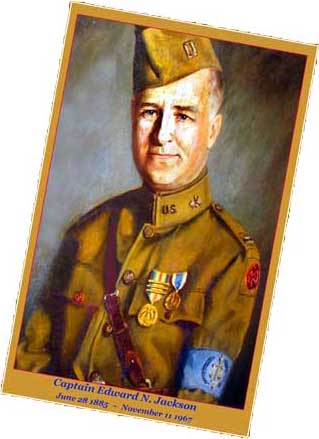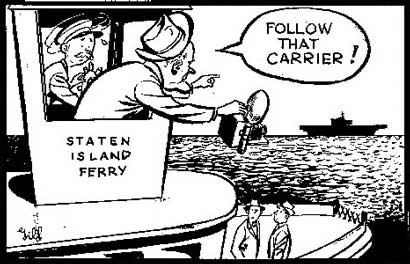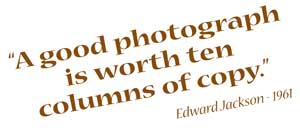

Edward Norman Jackson (June 28, 1885 –
November 11, 1967) An American photographer and
photojournalist for the New York Daily News. Jackson
was President Woodrow Wilson’s European
photographer during the close of WWI and
photographed “The Big Four” world leaders at the
Paris peace accord. For Jackson, news photography
was the “eyes” of the news.
Early Life
The youngest of four siblings of an Irish immigrant
family Jackson was born in Philadelphia, PA on
June 28, 1884. His impoverished family would
often go to the local “soup house” to obtain a
ticket for a loaf of bread and another ticket for a
can of bean soup, his personal journal states.
Jackson sold newspapers (Philadelphia
Bulletin) on street corners to help his family,
where he met a studio photographer who
offered him a job after school and Saturdays.
He was paid $1.50 a week. The studio specialized in tintype portraitures
in 1901. In 1903 the studio moved to Atlantic City, New Jersey and Jackson went with them. Jackson moved to New York City and worked for the American Press Association in the photo engraving department in 1912 where he also became a free lance news photographer.


News Photography
His career as a news photographer began on the streets of New York City where he would provide photographs to many news agencies and magazines throughout the country. Working as a contemporary “paparazzi” Jackson would stalk his newsworthy subjects throughout the city.
The burgeoning use of photography for newspaper stories launched him into this budding vocation. From his personal journal: “A new field of photography was emerging in 1910; newspapers wanted photographs to replace sketches and drawings for the news events they were going to print. The era of news photography was just beginning and I wanted to become one in the worst way. I never doubted my decision.”
In 1913 he accepted his first foreign free lance assignment and steamed to Panama aboard the Prince August William to photograph the Panama Canal before its official opening in 1914.This was the first of his many foreign news assignments. In 1915 Jackson was invited by his friend Thomas Alva Edison, newly appointed as President of the Naval Review Board, to document the inspection of a highly secret United States submarine “E-2” in the Brooklyn Navy yard. The United States had not entered WWI and did not want the warring nations to know about the development of submarine capability. Two weeks later the submarine mysteriously exploded killing several personnel. Jackson’s forbidden photograph of the damaged submarine appeared in all of the New York papers.
